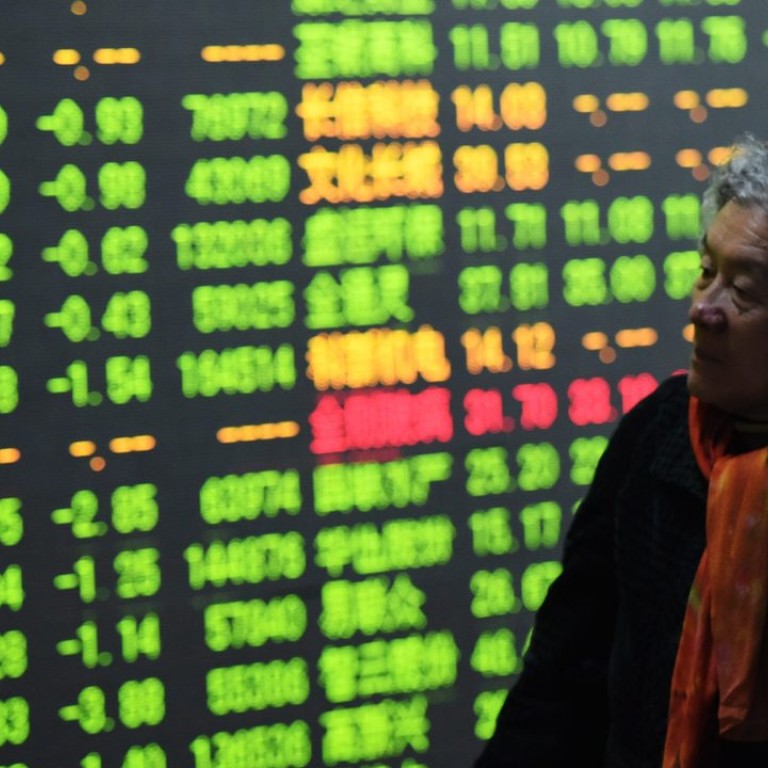
Distracted mainland investors steer clear of H shares
Southbound trading via stock connect scheme has failed to live up to expectations
Market regulators have highlighted the smooth running of the stocks through train since November 2014 but investors’ enthusiasm for the cross-border stock trading system remains lukewarm at best.
When the mainland and Hong Kong securities regulators launched the stock connect scheme it was seen as a groundbreaking move and was touted as an initial step taken by Beijing to make A-share trading rules on par with international practise.
The much-hyped system that links the Hong Kong and Shanghai stock exchanges was expected to give mainland investors with an interest in buying overseas shares direct access to Hong Kong-listed stocks.
However, southbound trading – mainland investors purchasing Hong Kong shares – has failed to live up to expectations.
Average daily turnover of southbound trading has been about 3 billion yuan, representing less than 30 per cent of the investment quota for mainland investors.
“The market rout on the A-share market last year massively lowered mainland investors’ risk appetite,” said Howhow Zhang, a strategy director at KPMG. “But a depreciating Chinese yuan could attract a flow of mainland funds to the Hong Kong market in the coming months.”
Mainland securities regulators now play down mainland investors interest in buying Hong Kong shares, describing the cross-border trading system as a reform with far-reaching significance, rather than a move to direct fund flows through the two markets.
Mainland China’s A-share market had long been off-limits to overseas investors, while domestic individual players had no access to foreign-traded stocks due to foreign exchange controls.
Investors should find out which stocks could be worth buying at a certain price range, rather than looking at overall liquidity and sentiment as well as listening to various kinds of market rumours
The regulators set a maximum quota of 250 billion yuan, or 10.5 billion yuan a day, for southbound trading.
Hong Kong investors are subject to a total northbound trading quota of 300 billion yuan, or 13 billion yuan a day.
The through train programme was also part of Beijing’s efforts to internationalise the mainland’s yuan currency.
In 2007, the State Administration of Foreign Exchange announced plans to kick off a similar scheme to let mainland retail investors directly buy Hong Kong-listed shares, but the policy never materialised and was scrapped later owing to worries about rampant outflows that could knock down mainland A shares.
“Hopes for active southbound trading turned out to be overoptimistic,” said Dong Jun, a Shanghai-based hedge fund manager. “But mainland investors failed to have a correct reading of the Shanghai-Hong Kong stock connect programme. It should have been a good chance for them to learn how to invest in equities.”
Since 1990, when the mainland created its stock market, mainland retail investors have been used to chasing short-term gains, buying shares of listed firms that were rumoured to be about to conduct asset restructurings to shore up profits or to have been targeted by powerful institutions whose heavy purchases could drive up stock prices.
“To date, mainland investors still like to speculate on the stock market instead of studying the fundamentals to buy shares on valuation,” said Shenwan Hongyuan Securities analyst Qian Qimin.
Last year, a boom-to-bust cycle on the A-share market that left millions of retail investors with lossed distracted many of them from watching H shares.
“The woeful A-share performance cost us too much attention,” said Zhang Zhichun, a seasoned A-share investor. “Nobody could afford time and energy to watch the H shares.”
Two trading suspensions caused by the circuit breaker system in the first week of this year added to evidence that panic selling could easily be triggered by moody mainland investors, with most of them perennially stuck with paper losses.
“Investors should find out which stocks could be worth buying at a certain price range, rather than looking at overall liquidity and sentiment as well as listening to various kinds of market rumours,” Dong said. “Mainland investors should be encouraged to invest more in H shares to understand how to become a qualified equity investor.”
Mainland A shares trade at a premium of about 40 per cent to the H shares of companies listed in both Hong Kong and on the mainland.
A stock connect link between the Shenzhen and Hong Kong stock markets is expected to be launched this year.
It had been expected to debut in the first half of last year, with the same quotas as the Shanghai-Hong Kong scheme. But the mainland market gyration that wiped out as much as US$5 trillion in market value last summer deterred regulators from giving the progamme a green light.
Analysts now expect it to be approved by June.

